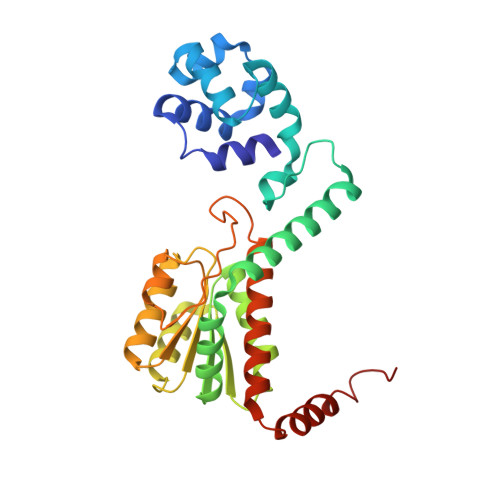Molecular mechanism of the one-component regulator RccR on bacterial metabolism and virulence.
Zhu, Y., Mou, X., Song, Y., Zhang, Q., Sun, B., Liu, H., Tang, H., Bao, R.(2024) Nucleic Acids Res 52: 3433-3449
- PubMed: 38477394
- DOI: https://doi.org/10.1093/nar/gkae171
- Primary Citation of Related Structures:
8JU9 - PubMed Abstract:
The regulation of carbon metabolism and virulence is critical for the rapid adaptation of pathogenic bacteria to host conditions. In Pseudomonas aeruginosa, RccR is a transcriptional regulator of genes involved in primary carbon metabolism and is associated with bacterial resistance and virulence, although the exact mechanism is unclear. Our study demonstrates that PaRccR is a direct repressor of the transcriptional regulator genes mvaU and algU. Biochemical and structural analyses reveal that PaRccR can switch its DNA recognition mode through conformational changes triggered by KDPG binding or release. Mutagenesis and functional analysis underscore the significance of allosteric communication between the SIS domain and the DBD domain. Our findings suggest that, despite its overall structural similarity to other bacterial RpiR-type regulators, RccR displays a more complex regulatory element binding mode induced by ligands and a unique regulatory mechanism.
- Center of Infectious Diseases, Division of Infectious Diseases in State Key Laboratory of Biotherapy, West China Hospital, Sichuan University, Chengdu, Sichuan 610041, China.
Organizational Affiliation:



















